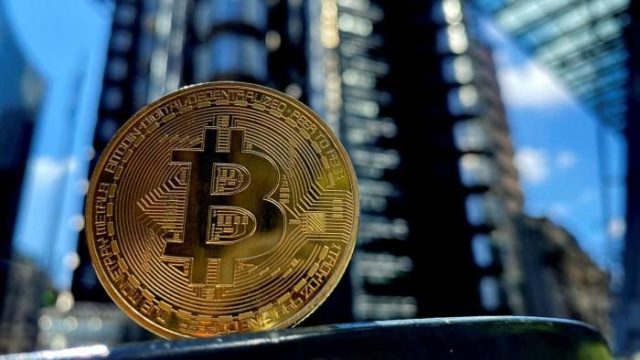- The British pound could continue its three-day streak of losses amid uncertainty over the economic outlook.
- S&P Global reported that the UK services PMI contracted for the second time in a row.
- Bank of England officials focused on the UK’s economic prospects in the face of persistent inflationary pressure.
The British Pound (GBP) is facing selling pressure as investors begin to worry about the UK’s weak economic outlook and the upside risks of inflation off the coast of Albion. The GBP/USD pair came under heavy pressure following the Bank of England’s (BoE) unexpected pause in monetary policy tightening last week. The unexpected pause in the rate tightening regime by the British central bank, contrary to expectations of an interest rate hike, signaled risks of an economic slowdown.
The British economy is losing steam amid uncertainty over the outlook for interest rates ahead of the general election. British Prime Minister Rishi Sunak has promised to halve inflation to 5.3% by the end of the year, but the pause announced by BoE policymakers indicates the authority may not keep his word. The UK’s economic activities have been hit hard by rising interest rates. Following the contraction of activities in the manufacturing sector, the services PMI also fell below the 50.0 level for the second consecutive time.
Daily Market Drivers Summary: Sterling Points Down on Dim Growth Prospects
- The British pound is trading slightly above a six-month low near 1.2200, as investors see the British economy slowing sharply in the final quarter of 2023.
- Investors are cautious about the UK’s economic outlook as consumer inflation expectations are expected to rise and the outlook for economic activities appears to worsen due to deteriorating demand side.
- Inflationary pressure in the UK economy is expected to accelerate further as the Bank of England (BoE) has paused policy tightening at 5.25%, while investors project the interest rate peak at 5.75%.
- BoE policymakers shifted focus to the UK’s economic outlook due to slowing labor demand and contracting factory activities. Regarding rising inflation, the BoE confirmed that it will keep interest rates high until price stability is achieved.
- S&P Global reported a mixed preliminary PMI for September. The Manufacturing PMI improved to 44.2 versus expectations and the previous release of 43.0. The services PMI came in at 47.2, below the consensus of 49.2 and August’s reading of 49.5.
- Manufacturing activities in the United Kingdom have been in a long period of contraction. The services sector has begun to follow the footsteps of manufacturing activities and remained below the level of 50.0 for the second consecutive time.
- The release of the UK Manufacturing and Services PMI below the 50.0 level indicates that overall economic activities are contracting, signaling a vulnerable economic outlook.
- BoE policymakers also believe that the growth rate will be lower in the future. In its monetary policy statement, the BoE indicated that third quarter gross domestic product (GDP) is expected to increase by 0.1% (August forecast: +0.4%), with underlying growth in the second half of 2023 likely higher weaker than expected in August.
- The reason for the slowdown in GDP figures is the growing uncertainty over the peak of interest rates before the general elections.
- In August, retail sales recovered strongly after the facelift in July. On a monthly basis, consumer spending rose 0.4% versus expectations of 0.5%. In July, retail sales contracted 1.1%, while the data, excluding fuel prices, matched expectations with 0.6%.
- Market sentiment remains cautious as investors see upside risks of a global slowdown. Central banks around the world have paused their policy of tightening monetary policy, having raised interest rates sharply over the past two years, as high inflation has slowed growth.
- The DXY Dollar Index has traded within the 105.27-105.78 range for the last three sessions, as investors remain uncertain about the outlook for interest rates for the remainder of 2023.
- Investors are pumping funds into the US Dollar amid a resilient US economy as it has absorbed the consequences of higher interest rates efficiently while other G7 economies are on the brink of recession. .
- For more information, investors await durable goods orders data for August, due out on Wednesday.
Technical Analysis: The Pound exposes six-month lows near 1.2200
The British pound has hit six-month lows near 1.2200 against the US dollar, as the appeal of risk assets weakens due to global slowdown risks. GBP/USD struggles to find buying interest as investors remain concerned about UK economic growth. GBP/USD could continue its three-day losing streak if it fails to defend the immediate support at 1.2230. The downward sloping 20-day and 50-day exponential moving averages (EMA) predict further weakness.
BoE FAQ
What does the Bank of England do and how does it impact the Pound?
The Bank of England (BoE) decides the UK’s monetary policy. Its main objective is to achieve price stability, that is, a constant inflation rate of 2%. Its instrument to achieve this is the adjustment of basic loan rates. The BoE sets the rate at which it lends to commercial banks and at which banks lend to each other, determining the level of interest rates in the wider economy. This also influences the value of the British Pound (GBP).
How does the Bank of England’s monetary policy influence the Pound Sterling?
When inflation exceeds the Bank of England’s target, it responds by raising interest rates, which makes access to credit more expensive for citizens and companies. This is positive for the British Pound, as higher interest rates make the UK a more attractive place for global investors to invest their money. When inflation falls below target, it is a sign that economic growth is slowing, and the Bank of England will consider lowering interest rates to make credit cheaper in the hope that companies will borrow to invest in projects that generate growth, which is negative for the Pound sterling.
What is Quantitative Easing and how does it influence the Libra?
In extreme situations, the Bank of England can apply a policy called Quantitative Easing (QE). QE is the process by which the BoE substantially increases the flow of credit into a clogged financial system. QE is a policy of last resort when lowering interest rates does not achieve the necessary result. The process of QE involves the Bank of England printing money to buy assets, typically government bonds or AAA-rated corporate bonds, from banks and other financial institutions. QE usually results in a weakening of the British pound.
What is Quantitative Hardening and how does it influence the British Pound?
Quantitative tightening (QT) is the reverse of QE, and is applied when the economy is strengthening and inflation begins to rise. While in QE the Bank of England (BoE) buys government and corporate bonds from financial institutions to encourage them to lend, in QT the BoE stops buying more bonds and stops reinvesting the maturing principal of the bonds that you already own. It is usually positive for the British pound.
Source: Fx Street
I am Joshua Winder, a senior-level journalist and editor at World Stock Market. I specialize in covering news related to the stock market and economic trends. With more than 8 years of experience in this field, I have become an expert in financial reporting.







